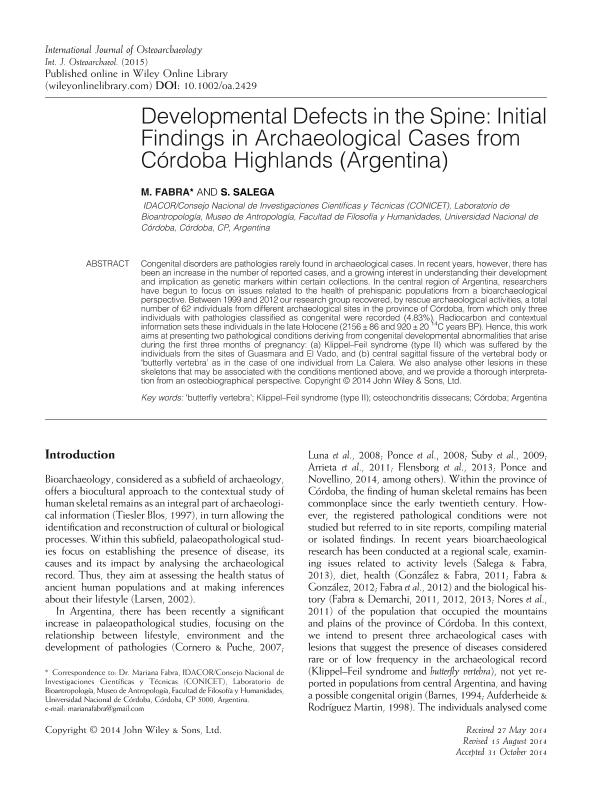Artículo
Developmental defects in the spine: initial findings in archaeological cases from Córdoba Highlands (Argentina)
Fecha de publicación:
05/2016
Editorial:
Wiley
Revista:
International Journal of Osteoarchaeology
e-ISSN:
1099-1212
Idioma:
Inglés
Tipo de recurso:
Artículo publicado
Clasificación temática:
Resumen
Congenital disorders are pathologies rarely found in archaeological cases. In recent years, however, there has been an increase in the number of reported cases, and a growing interest in understanding their development and implication as genetic markers within certain collections. In the central region of Argentina, researchers have begun to focus on issues related to the health of prehispanic populations from a bioarchaeological perspective. Between 1999 and 2012 our research group recovered, by rescue archaeological activities, a total number of 62 individuals from different archaeological sites in the province of Córdoba, from which only three individuals with pathologies classified as congenital were recorded (4.83%). Radiocarbon and contextual information sets these individuals in the late Holocene (2156 ± 86 and 920 ± 20 14C years BP). Hence, this work aims at presenting two pathological conditions deriving from congenital developmental abnormalities that arise during the first three months of pregnancy: (a) Klippel–Feil syndrome (type II) which was suffered by the individuals from the sites of Guasmara and El Vado, and (b) central sagittal fissure of the vertebral body or ‘butterfly vertebra’ as in the case of one individual from La Calera. We also analyse other lesions in these skeletons that may be associated with the conditions mentioned above, and we provide a thorough interpretation from an osteobiographical perspective.
Archivos asociados
Licencia
Identificadores
Colecciones
Articulos(IDACOR)
Articulos de INSTITUTO DE ANTROPOLOGIA DE CORDOBA
Articulos de INSTITUTO DE ANTROPOLOGIA DE CORDOBA
Citación
Fabra, Mariana; Salega, María Soledad; Developmental defects in the spine: initial findings in archaeological cases from Córdoba Highlands (Argentina); Wiley; International Journal of Osteoarchaeology; 26; 3; 5-2016; 397–407
Compartir
Altmétricas




